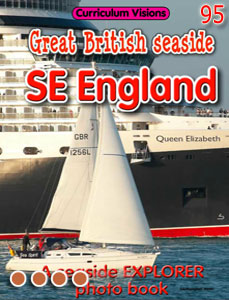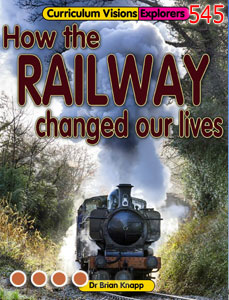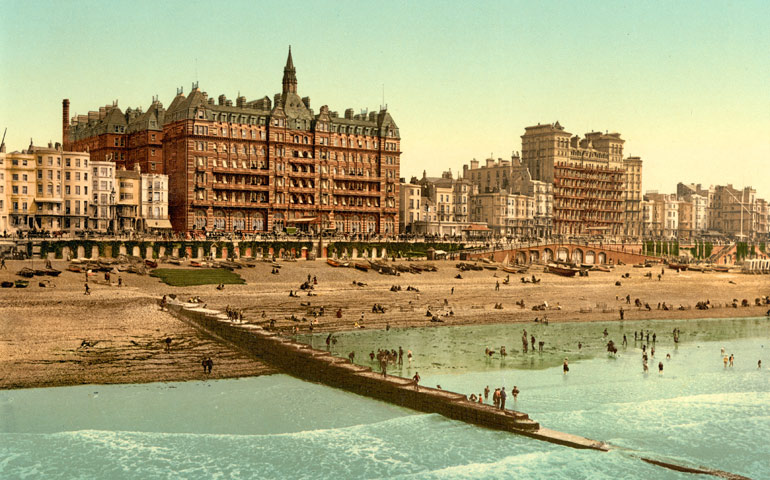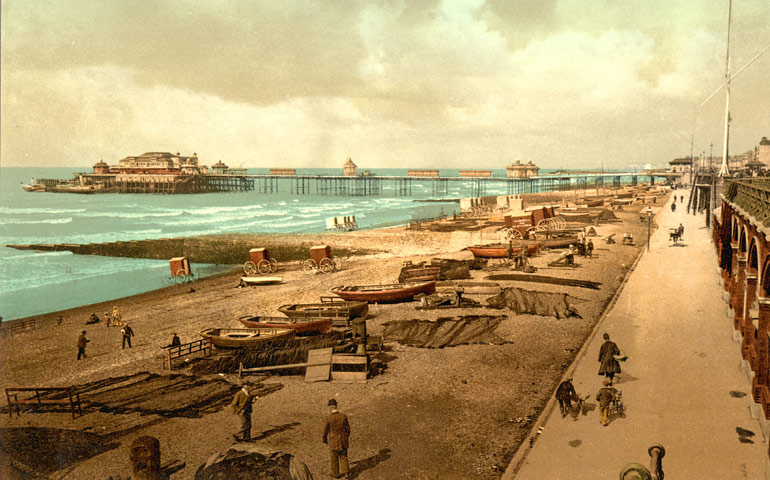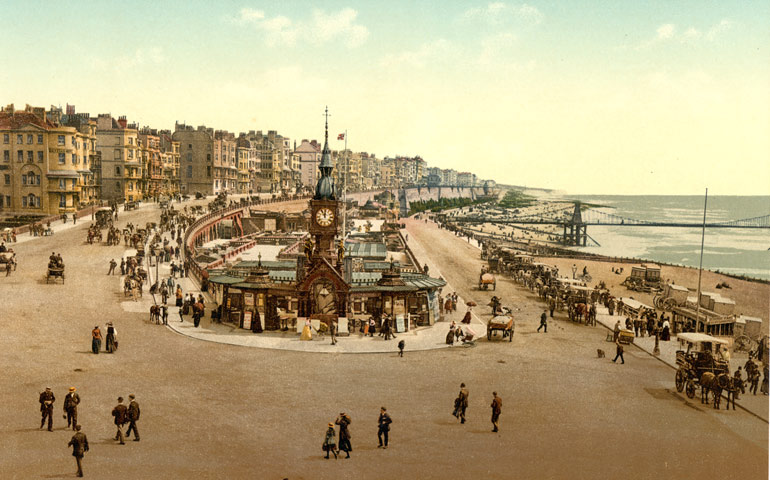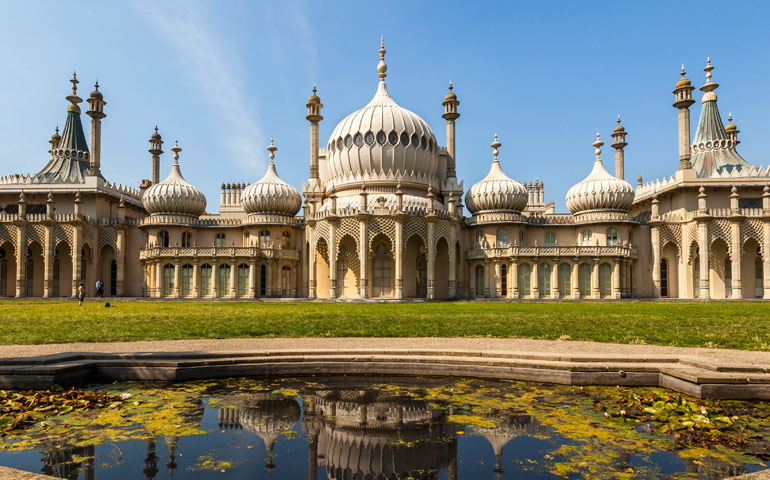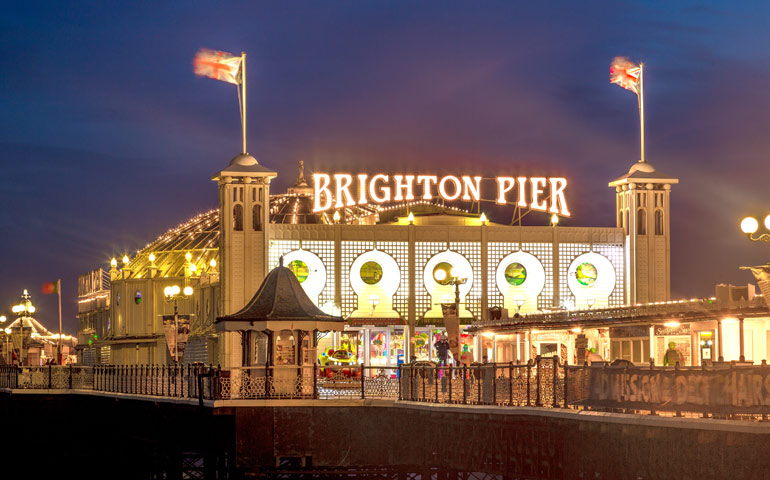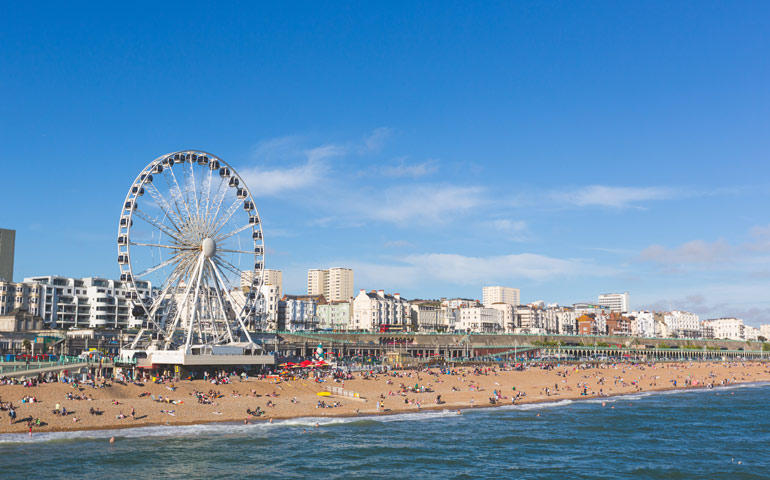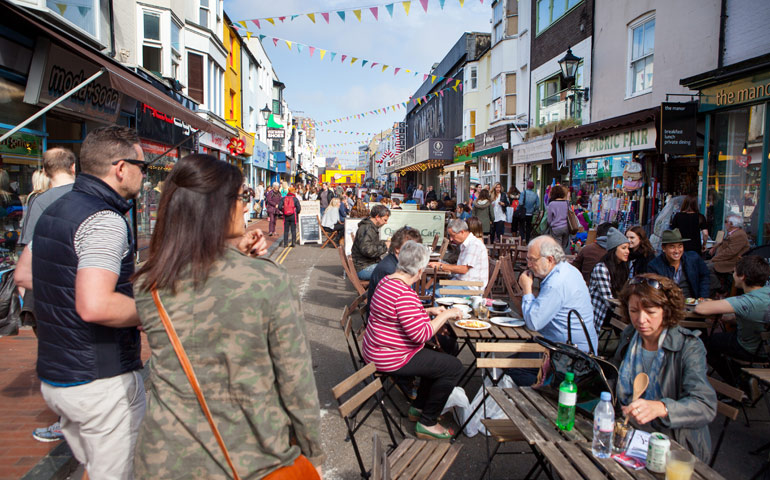Brighton is one of the main south coast cities. As with many other seaside places, it was a small fishing village for many hundreds of years, with fishing boats being drawn up on the beaches. But in the 18th century it became one of the foremost health resorts, in part because it was so easy to get to from London. Brighton was, as a result, one of the first places to see the railway arrive (1840).
Brighton was not important in either Roman or Saxon times, although it is recorded as a small place in the Domesday Book. It became the centre for a monastery in Norman times. However, by 1312 it had a market and a name: Brighthelmstone.
Because there are no tall cliffs in the area, the shore changed often in early times and many houses were lost to the sea.
The remarkable growth of Brighton was due to Dr Richard Russell of nearby Lewes, who began to treat his patients with seawater at Brighthelmstone. In 1753, he even built a sanatorium (a kind of convalescence home) for his patients. Soon after, the idea of drinking mineral waters for health became all the rage.
But the reason Brighton became so popular was due to another historical accident. Dr Russell died in 1759, and his house was taken over by George III, the Duke of Cumberland. In 1783, the Prince of Wales (later the Prince Regent) visited his uncle, and took a fancy to the town. It was here that he decided to build the Brighton Pavilion. This sparked a massive growth of houses for the wealthy, all of whom wanted to be wherever the Prince was.
So, by 1780, many fine Georgian terraces had been built. It was, of course, still not easy to get to Brighton, for the railway had not yet been invented. But it was far easier to reach than many other places. For those who did not build a house on the seafront, great hotels were built, something that started in the 1820s and went on through Victorian times.
Queen Victoria used the Brighton Pavilion, and the railway allowed many more visitors to look at where she lived. In fact, it became such a sightseeing spot, that she was forced to buy an estate on the Isle of Wight (Osborne House) just to escape from them.
Unlike many other places, which have been less popular than they were in Victorian times, Brighton has continued to be popular.
